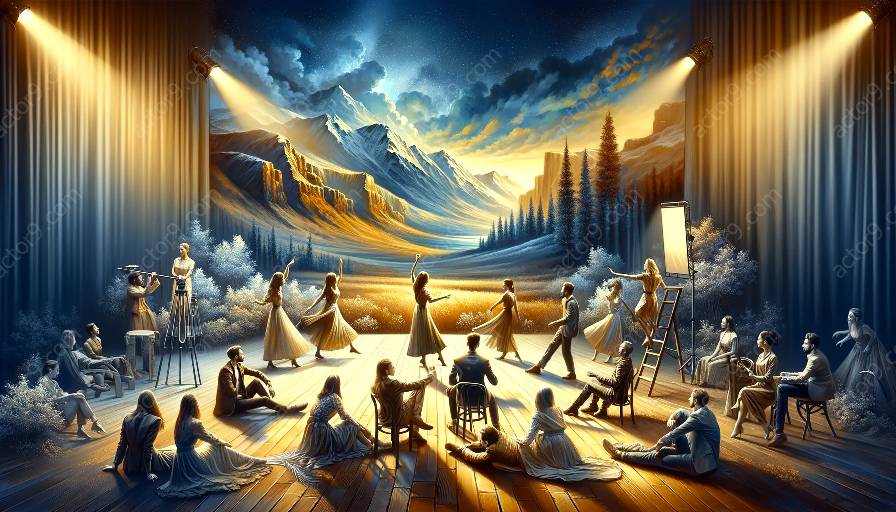Introduction to Non-Verbal Storytelling in Playback Theatre
Non-verbal storytelling is a powerful and evocative form of communication that plays a significant role in playback theatre. As an improvisational form of theatre, playback theatre relies on the collective creation of stories from audience members' experiences. Non-verbal storytelling, within this context, involves the use of gestures, body language, facial expressions, and movement to convey emotions and narrative elements without words. This topic cluster explores the significance of non-verbal storytelling in playback theatre, its compatibility with playback theatre and acting techniques, and its impact on audience engagement and emotional connection.
Understanding Non-Verbal Communication in Playback Theatre
Non-verbal communication is a fundamental aspect of playback theatre, as it allows performers to connect with audience members and accurately depict their stories. Playback theatre techniques, such as mirroring, amplifying, and sculpting, often incorporate non-verbal cues to capture the essence of the shared experiences. When combined with acting techniques, non-verbal storytelling enriches the performance by portraying a depth of emotions and experiences.
Integration of Non-Verbal Storytelling and Playback Theatre Techniques
Playback theatre techniques emphasize the significance of non-verbal storytelling in eliciting authentic and engaging performances. The technique of 'conducting' allows the director to guide the improvisation through non-verbal cues, fostering a cohesive and resonant narrative. Additionally, 'fluid sculpture' and 'storytelling chorus' techniques enable the performers to embody non-verbal storytelling elements, enhancing the portrayal of diverse narratives.
Strategies for Utilizing Non-Verbal Storytelling Techniques
Non-verbal storytelling in playback theatre can be further strengthened by integrating acting techniques, such as character development, physicality, and emotional expression. Through the use of body language and facial expressions, performers can authentically convey the emotions and experiences of the stories being shared. Techniques like 'status work' and 'emotional memory' from acting methodologies contribute to the depth and authenticity of non-verbal storytelling in playback theatre.
Effectiveness of Non-Verbal Storytelling in Creating Emotional Impact
Non-verbal storytelling has the profound ability to evoke emotions and create a compelling narrative without relying on spoken dialogue. In playback theatre, the integration of non-verbal storytelling techniques serves as a catalyst for empathetic connections with the audience, fostering a dynamic and immersive theatrical experience. The fusion of playback theatre and acting techniques further amplifies the emotional impact, enabling performers to express a wide range of emotions through non-verbal means.
Conclusion
Non-verbal storytelling in playback theatre presents an enriching and captivating medium for emotional expression and narrative creation. By intertwining playback theatre techniques and acting methodologies, performers can harness the power of non-verbal communication to authentically portray stories, connect with the audience, and evoke profound emotional responses. Embracing the art of non-verbal storytelling in playback theatre opens new avenues for immersive and impactful theatrical performances.













































